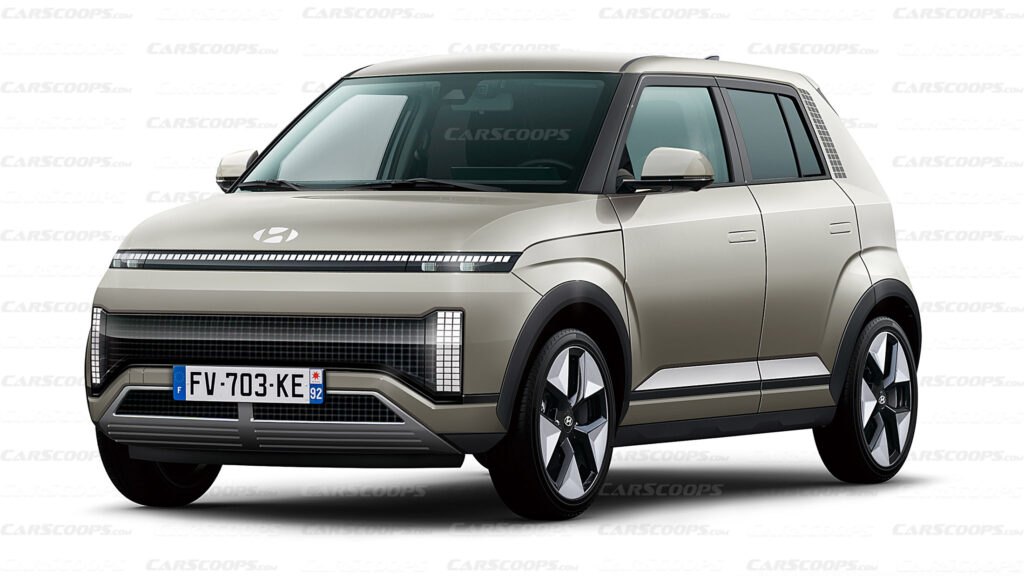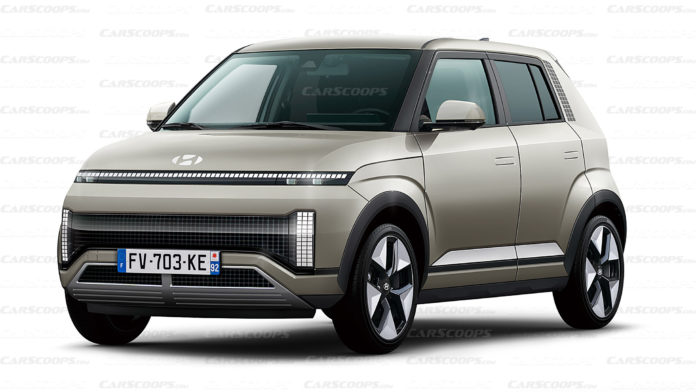A small EV crossover and a closely-related city car could serve as entry-points in Hyundai’s EV range in the Old Continent
5 hours ago

by Thanos Pappas
This story contains illustrations created by Jean Francois Hubert/SB-Medien that are not related to or endorsed by Hyundai
According to our sources, Hyundai is working on a pair of electric vehicles (EVs) for urban use in Europe, and there are indications that one of them may be a small crossover. Although the Korean automaker has not yet confirmed the development of this model, we have collected all available information, along with a speculative rendering, to give you a preview of what may be in store.
Hyundai announced last year that it was developing an A-segment city car priced below €20,000. Since then, there have been reports about a second similarly-sized model. Although the automaker has not released any official details about the design of these models, it is likely that one of them will be a city car, serving as an EV alternative to the recently facelifted i10, while the other will be a high-riding crossover, similar to the Casper.
Read: Hyundai To Launch Next-Gen i10, i20, And i30 Hatchbacks Despite Shrinking Small Car Market


The Hyundai Casper admittedly enjoyed an enthusiastic response largely due to its quirky styling. However, as suggested by the renderings created by our artist, the similarly-sized EU-spec model could feature a completely redesigned body with futuristic styling cues inspired by the likes of the Ioniq 5 and the Kona EV.
Hyundai’s signature pixel LED headlights could be applied in a full-width bar and in bumper-mounted units, making up for the lack of intakes. A similar treatment should be expected for the taillights. The profile could combine minimalist surfacing with a small dose of plastic cladding.
advertisement scroll to continue
Electrified Architecture For Lower Costs
While all models from the current EV range of Hyundai are based on the E-GMP architecture, this won’t be the case with the upcoming A-Segment models. The reason for that is that the platform is compatible with larger B-Segment (subcompact) to E-Segment (large) vehicles and would be too expensive for an entry-level offering.
A plausible scenario for the tiny models would be an electrified variant of the tried-and-tested K1 architecture that underpins ICE-powered models like the Hyundai i10 and the Kia Picanto. A zero-emission offering based on the K1 platform is doable as proven by the Korean-spec Kia Ray EV, and the upcoming Hyundai Casper EV that is expected in 2023. The EU-spec EVs will likely feature an evolved and more refined version of the underpinnings, bringing improvements in ride quality, NVH, safety, and efficiency, in a quest to satisfy the more demanding European buyers and safety regulations.

It is too early to talk about specifications but Hyundai has confirmed that its future small-sized EVs will come fitted with an integrated drive module (iDM) sourced from BorgWarner. This single electric motor is capable of producing up to 181 hp (135 kW / 184 PS), which could be scaled down for production as it is too much for urban use.
If the reports about the urban EVs are true, the future sounds promising for Hyundai fans in the Old Continent with the upcoming debuts rumored for mid-2023 and late-2024. However, the Korean automaker is not the only one planning on introducing entry-level electric offerings in the region. The Volkswagen Group is preparing its own offensive with slightly larger but still affordable supermini-sized EVs from VW, Cupra, and Skoda coming in 2025.

